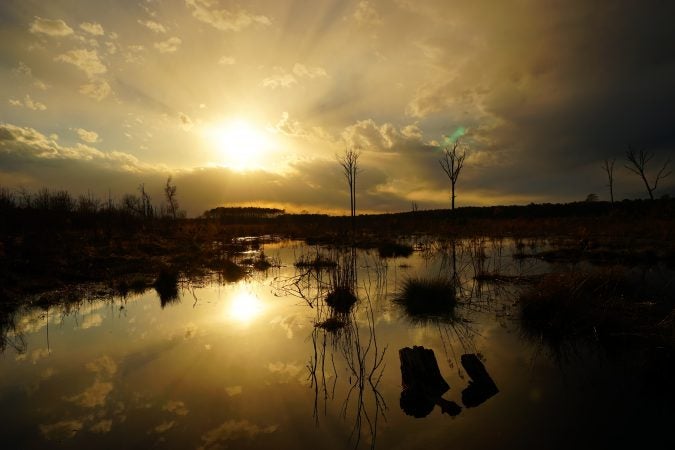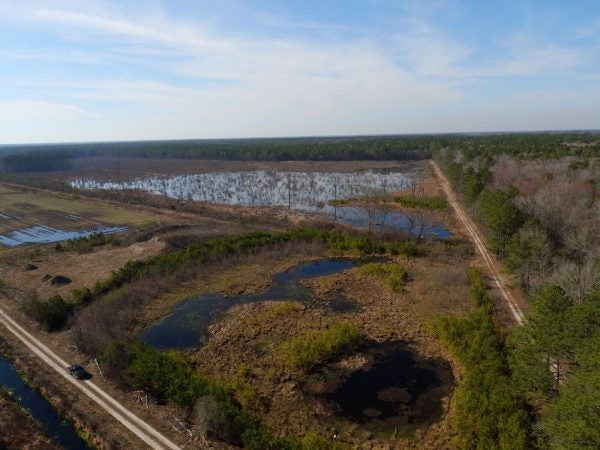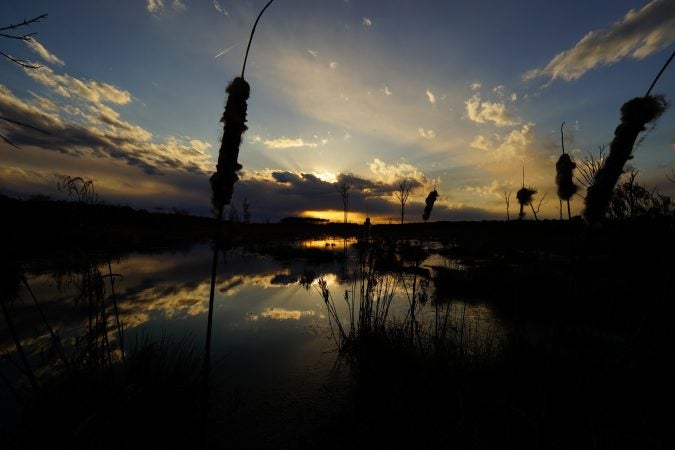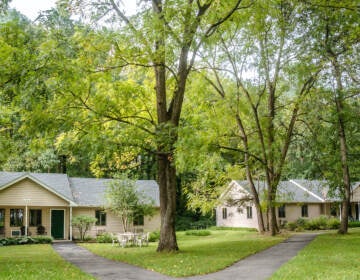Returning the swamp: Land donation aims to restore Delaware wetland
Wildlife conservationists say more of Delaware’s native species will be protected, thanks to a recent donation of land.
-

More of the Great Cypress Swamp in southern Delaware is being preserved. (Andrew Martin/ Delaware Wild Lands)
-

(Andrew Martin/ Delaware Wild Lands)
-

(Andrew Martin/ Delaware Wild Lands)
-

(Andrew Martin/ Delaware Wild Lands)
Wildlife conservationists say more of Delaware’s native species will be protected, thanks to a recent donation of land.
Delaware Wild Lands will use the 160 acres to expand its conservation of what’s left of the Great Cypress Swamp — the Delmarva Peninsula’s largest forest and largest freshwater wetland —on the state’s southern edge. Similar to the swamps of the Deep South, it’s one of the nation’s northernmost cypress swamps.
“In a time when there’s so much development happening in Western Sussex County, we’re excited to say that property won’t ever be developed,” said Kate Hackett, executive director of Delaware Wild Lands.
The donation was made by the family of the late Nancy Smoot, a longtime Sussex County resident who was interested in conservation.
The donated land will be integrated into the group’s forest-management plan to sustain and improve resources at the Great Cypress Swamp.
The land, once a stop along the Underground Railroad and harbor for deserting Civil War troops, formerly covered nearly 60,000 acres. But over the years, portions have been sold and drained for agricultural purposes, which Hackett said was common in the early 1900s.
Delaware Wild Lands, which owns and maintains 10,600 contiguous acres of swamp, is trying to bring it back to its historic condition — what Hackett describes as “returning the swamp back to the swamp.”
Since 2011, the group has planted 194,000 native trees in the Great Cypress Swamp. It has identified a core area for the refuge of birds and other wildlife; restored and expanded forest resources; increased wetland habitat; and harvested forest to increase its diversity. Timber is sold on the market and proceeds fund restoration activities.
Those efforts are paying off, Hackett said. Radar surveys show migratory birds stop at the site overnight on their journey. And the swamp has become a refuge for red-headed woodpeckers, river otters, bald eagles, butterflies, green herring and waterfowl.
The results are significant in a time where Delaware — and the U.S. as a whole — faces substantial declines of native species. A University of Delaware study reports 40 percent of all native plant species are threatened or extinct, and 41 percent of bird species that rely on forests are rare or absent.
In the U.S., one-third of all wildlife species are at risk of extinction, according to the National Wildlife Association.
Hackett said she hopes the expansion of the swamp will play an integral role in efforts to protect Delaware’s species.
“In the past 50 years, and in even the past 200 years, the state of Delaware has lost a tremendous amount of freshwater wetlands and forest resources,” she said. “Those two habitats are important to protect, so we can sustain our wildlife and bird populations.
“That’s what we’re trying to do in the Great Cypress Swamp, to give them a giant oasis to be able to depend on, even as property around the Great Cypress Swamp is being developed.”
WHYY is your source for fact-based, in-depth journalism and information. As a nonprofit organization, we rely on financial support from readers like you. Please give today.





